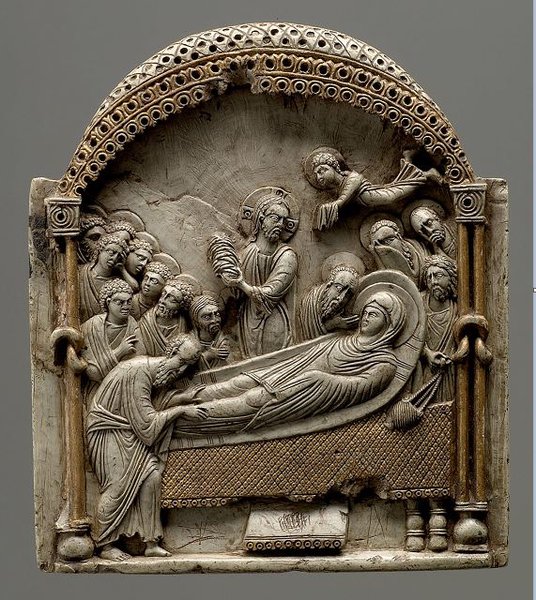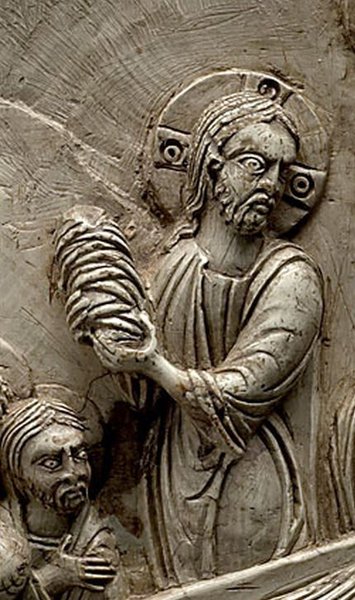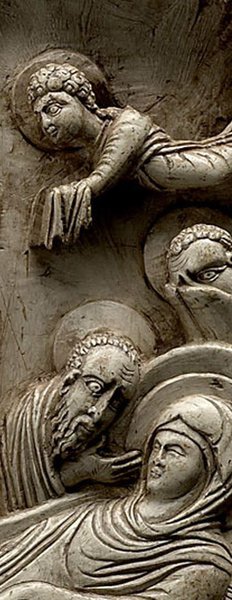Discover entertaining essays on a wide variety of artworks from our extensive collections in the section Art Stories.

Am I the Queen of Heaven?
Not yet, provided we are speaking about the legends, dogma, prayers and traditions attributed to my person in church history. However, August 15 was established under the Byzantine emperors as the feast of my assumption.
But here and now I am not queen, but the king’s throne. I am not the shore, but the bridge that leads to the shore. I know my place; it was assigned to me many years ago in Constantinople.

At that time, the moment of my peaceful death was immortalized in soapstone of a pale green hue. The stone presents an immaculate surface, which is very appropriate. Small and delicate, fragile, and at the same time easy to transport and timeless: in the presence of this painstakingly fashioned work of art my owners prayed more fervently still.
My image is 1000 years old.
The head of the swaddled infant, who represents my soul, has gone astray in the course of centuries, as has one of the two angels. But that does not diminish my dignity.

It is though I have fallen asleep.
The apostles, who were strewn to the four corners of the globe, have gathered around my deathbed that lies beneath a baldachin.
Now Jesus has received my soul and is about to entrust it to an angel who hurriedly descends. Paul carefully clasps my legs, Andrew attends to the incense, and John bends towards me. How differently people mourn—you can see this in their faces and gestures.
I would now like to anticipate something and leave the place and time of my creation.
Death of the Virgin Mary, Koimesis, Constantinople, 2nd half of 10th century, steatite, partly gilt, H. 13 cm, W. 11.2 cm, D. 1.5 cm, KHM, Kunstkammer, Inv. no. KK 8797
Have you gathered a bouquet of herbs for my feast day?
Keep it in the family shrine. What makes up the bouquet?
Soaring mullein represents man’s dignity, yarrow and lady’s mantle stand for the wish for healing. The sprig of hazel with its hard, protective shell symbolises the desire for physical integrity; mugwort inspires, meadowsweet and St. John’s wort represent the pure joy of life; angelica and chicory fortify inwardly.
All of these wishes and longings, strength, ideas and life’s joy await you in heaven.
Until then: in case of distress and affliction, burn one or another of the herbs in the hearth fire—this pagan tradition I gladly support.